Sunday 24 June 2018
Weeting Heath
Highlights:
Stone Curlew x2
Spotted Flycatcher x2
RSPB Lakenheath
Highlights:
Bittern x8
Hobby x3+
Kingfisher
Cuckoo
Bearded Tit
Thetford Forest
Highlights:
Tree Pipit x2
Woodlark x2
Marcus' report is shown below:
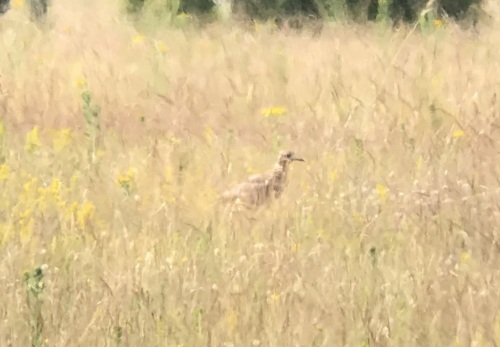
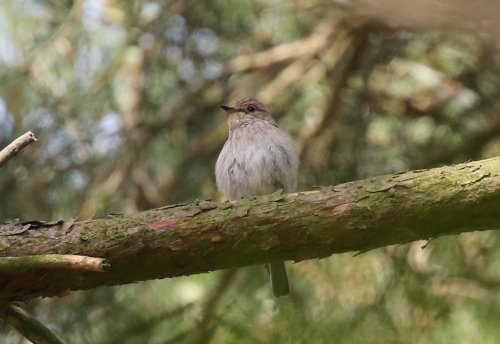
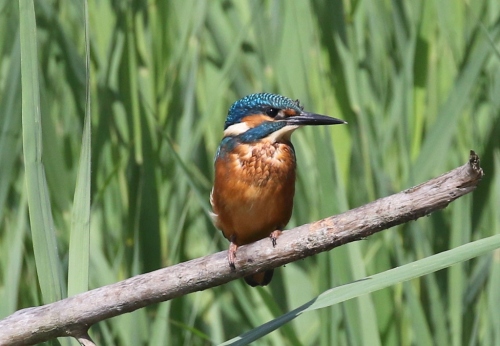
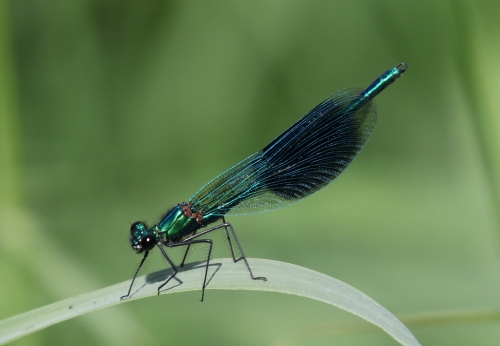
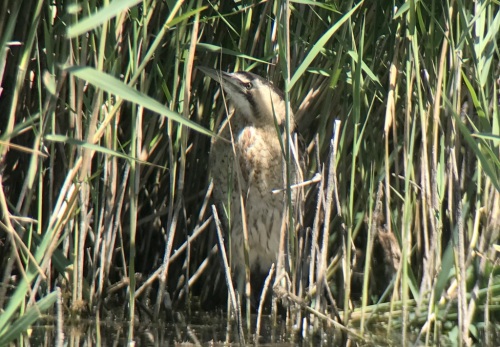
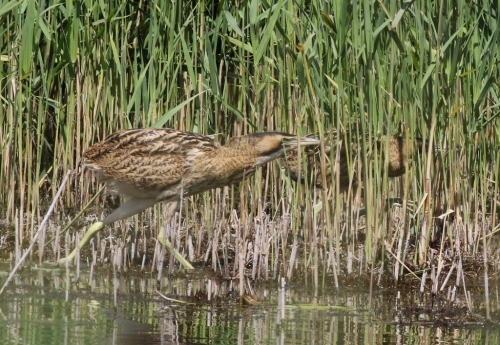

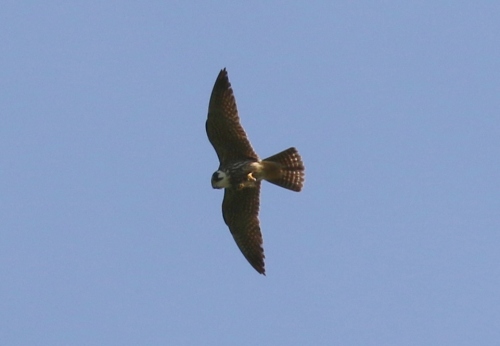
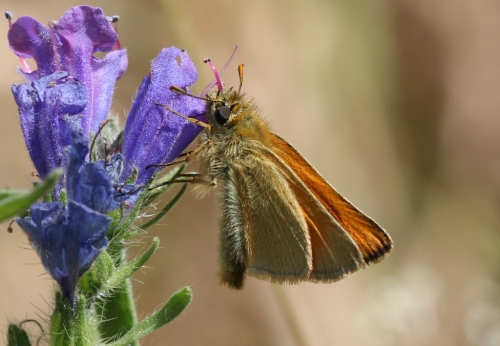
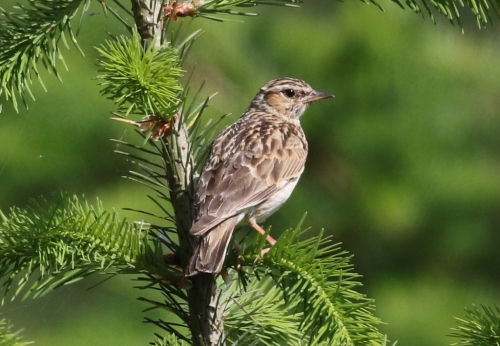
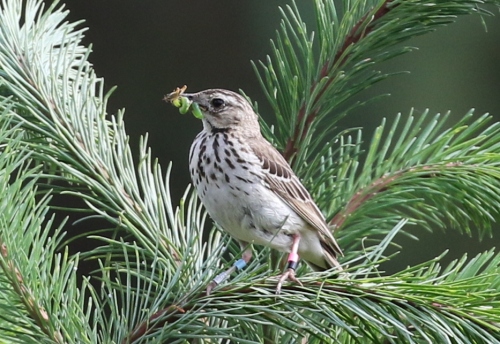
24th June 2018 – Midsummer Birding, Day 3
Day 3 of a three day long weekend of Summer Tours today, our last day. It was glorious sunny weather, blue skies and hot! We headed down to the Brecks for the day.
It was already warming up nicely when we got down to the Brecks, so we headed straight over to Weeting Heath. We wanted to try to catch up with the Stone Curlews before the heat haze got too bad, which it often can be here in the middle of the day, when the birds can also be less active. The grass is very long too, as a consequence of a sharp decline in the rabbit population. We were therefore very pleased when we opened the flaps and saw a Stone Curlew out in the long grass.

Stone Curlew – in the long grass at Weeting
The Stone Curlew was busy feeding, walking quickly, stopping, picking at the ground. We had a good look at it through the scopes, but it disappeared into the long grass after a couple of minutes.
A (Common) Curlew flew in from behind us, giving its beautiful bubbling song as it glided down and landed on the grass close to where the Stone Curlew had been. We were watching the Curlew when the Stone Curlew appeared out of the longer grass again. It eventually walked across and we had the two species side by side.
The Stone Curlew then walked off and stood where we could get a good look at it. The next thing we knew, a second Stone Curlew stood up right beside it, from where it had been hidden in the grass. It was obviously changeover time at the nest. The first Stone Curlew then settled down into the grass and the second bird walked off a short distance, where it stood preening for a few minutes.
When the second Stone Curlew walked off into the longer grass to feed, we took that as our cue to move on. There has been a pair of Spotted Flycatchers in the trees by the hide here, but we couldn’t find them when we emerged. They have already fledged their first brood, so they have become more mobile. We decided to walk down to the hide at the west end to look at the feeders and see if we could find them on the way.
We heard a couple of Coal Tits high in the pines on the walk, and had a brief view of a Nuthatch up in the canopy of the trees. A Goldcrest showed a little better and a Treecreeper was calling too. There were plenty of birds around the feeders – lots of young Blue Tits and Great Tits. A couple of Yellowhammers were feeding on the ground below and one came in for a drink at the small pool. Another Nuthatch made a quick ‘smash and grab’ visit too.
On the walk back, as we got to the junction with the path to West Hide, we could hear the Spotted Flycatchers calling. We eventually had nice views of one or two of them when they perched where we could see them, although they could be hard to see up in the trees.

Spotted Flycatcher – eventually perched up nicely
Our next destination was Lakenheath Fen. As we came out of the visitor centre, a couple of photographers had their lenses fixed on one of the sallows by the pool just outside. A Kingfisher was perched up in the outside of the bush, half hidden in the leaves. It dived down into the pool and then flew up again back into the leaves, where we could just see it.
Thankfully, the next time the Kingfisher dropped, it flew back up and landed on one of the branches down in the water, right out in the open, where we could get a much better look at it.

Kingfisher – fishing on the pool behind the visitor centre
As we walked out along the main path into the reserve, we could hear Reed Warblers and Sedge Warblers singing. A Sedge Warbler perched up nicely in the top of a small sallow in the reeds. A Cetti’s Warbler shouted at us from the bushes further over. There were a few Common Whitethroats flitting around in the vegetation too.
When we got to New Fen Viewpoint, a flock of Gadwall flew over. We were just looking in the field guide to show why they were identifiable as Gadwall, when a Bittern was called by some of the other people there, flying up from the reeds. It was only a brief sighting, but we were too busy looking in the book! Not to worry, we should hopefully get another chance.
Two Hobbys were circling high over West Wood, way off in the distance, and a Marsh Harrier circled up to join them. An adult and an almost fully grown but still stripy-headed juvenile Great Crested Grebe were out on the pool below.
As we walked along the bank on the south side of New Fen, there were loads of dragonflies in the vegetation either side. We saw lots of Ruddy Darters and several Brown Hawkers out to day, as well as Four-spotted Chasers and Black-tailed Skimmers. There were one or two Banded Demoiselles along the path too. Looking carefully through all the Azure Damselflies we found a few Variable Damselflies and Red-eyed Damseflies in with them.

Banded Demoiselle – there were lots of dragonflies & damselflies out today
About half way along the bank, a couple ahead of us called to say they had found a Bittern. We walked up to them and they pointed it out, standing on the edge of the reeds. We had a great look at it through the scope. While we were watching it, a second Bittern flew back over the reeds. A Green Woodpecker flew past too.
The first Bittern stood on the edge of the reeds in the sun, preening and looking round, then walked a short distance and started to look for food, leaning over with its bill down close to the water. It snapped at something a couple of times, possibly insects on the water surface, before eventually walking back into the reeds.

Bittern – standing on the edge of the reeds at New Fen
Now the Bittern floodgates opened! A little further down the path, we looked up along one of the channels cut through the reeds and saw another Bittern flying down low over the water, before turning and disappearing into the reeds on one side. As we got up almost to the junction with the path to Mere Hide, we spotted yet another one, flying in over the reeds. It appeared to drop down in front of the hide, so we hurried round.
Before we got to the hide, we scanned the edge of the reeds from the boardwalk and noticed some movement. There were two Bitterns. They started walking quickly along through some short sparse reeds on the edge – it almost looked like it was a race at one point! They made it to a patch of thicker reed and disappeared in, but then came back out onto the edge and stood half hidden. They looked slightly small and it turned out they were recent fledglings, not quite yet fully grown.

Bittern – two recent fledglings on the edge of the reeds
Having had such great views of the Bitterns from the boardwalk, we didn’t go into the hide, but headed on towards Joist Fen. We continue to scan over the reeds and we were about half way there when we spotted a bird flying beyond the Joist Fen viewpoint. It was yet another Bittern. It came in past the viewpoint, and continued on right past us and eventually landed in the reeds somewhere near Mere Hide. A very long feeding flight!
A Cuckoo was singing from somewhere deep in West Wood, but we couldn’t see it. The family of Great Crested Grebes are still on one of the pools by the path, but the four young ones are well grown now. It looked like one of them was still keen to try to ride on its parent’s back though!

Great Crested Grebes – the juveniles are well grown now
Out at the Joist Fen viewpoint, we stopped for a rest. There did not appear to be too much happening, but it was nice to have a sit down. A Cetti’s Warbler shouted from the bushes close by – nice to hear them now, as their numbers have dropped sharply in East Anglia after the cold winter. There were a couple of Marsh Harriers circling in the distance too. Then yet another Bittern flew across over the reeds.
After resting out legs, we got up to walk back. As we did so, a Cuckoo flew past over the reeds and disappeared out towards the paddocks. We had heard a couple of Bearded Tits on the walk out, but they can be very hard to see here. As we walked along the path, we heard one call and turned to see a male fly up out of the reeds close in front of us and disappear off behind us.
Along the main path by New Fen, we looked up to see a Kestrel circling. Scanning the sky, we found a Hobby too, much further over and very high up. It gradually drifted our way and dropped a little lower and we watched it catching insects high overhead.

Hobby – catching insects high overhead
There was one last addition to the day’s list here, when we were most of the way back. We finally found a couple of male Scarce Chaser dragonflies, perched up on the reeds by the path. Then it was back to the visitor centre for a rather later then planned lunch and another welcome rest after the long walk in the sun.
After lunch, we headed back into the Forest. We parked by a ride and walked into the pines. There were lots of butterflies buzzing around the Viper’s Bugloss, a mixture of Small and Essex Skippers. We had a closer look at them and even managed to see the key difference in the colour of the underside of their antennae!

Small Skipper – with a pale underside to the antennae
It was very quiet when we got out to the clearing at the far end, but then it was the middle of the afternoon on the hottest day of the year so far! We found a male Yellowhammer perched up on one of the stump rows and, just behind it, a Stonechat was flycatching, but dropping back down out of view.
There has been a pair of Common Redstarts here and they have been feeding their recently fledged young in the last few days, so we went round to try to see them. It was all quiet where they have been though. We carried on a little further and noticed a bird fly up from the ground in the shade under a large oak tree. It headed straight up into the canopy, where we just managed to get a glimpse of a red tail. It was one of the Redstarts. Unfortunately it then stopped moving somewhere high in the canopy. We walked on a short way, and when we came back it did exactly the same thing again!
It was obviously too hot for much activity now. We walked back to the edge of the clearing, where all was very quiet. As we walked along the path though, we caught a distant snippet of a bird sub-singing. It sounded like a Tree Pipit, but as we stepped round the trees we noticed a Woodlark perched in the top of a young pine. A second Woodlark flew up from the ground at out feet and perched nearby where we could get a good look at it.

Woodlark – one of the pair in the clearing
Then the Tree Pipit flew up from right in front of us and landed in another small fir tree. It was carrying food in its bill so presumably has young to feed nearby. As we looked more closely we could see it was fitted with a combination of colour rings. It was an old friend, an individual we saw in pretty much exactly the same place last year. It seems to be very successful here as, according to the ringer, it was already feeding its second brood!

Tree Pipit – a colour-ringed individual we have seen here the last couple of years
It was time to start heading back now. It had been a very successful three days, with a great selection of our breeding birds, as well as insects and other wildlife.
No comments:
Post a Comment
Note: only a member of this blog may post a comment.